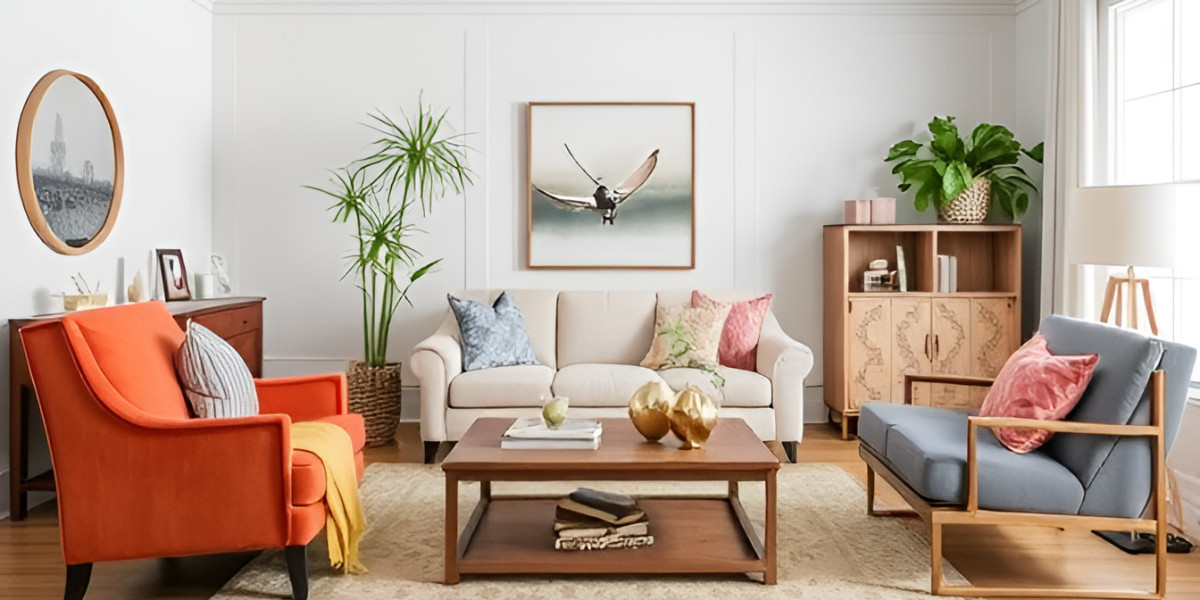Creating a harmonious home often means blending different furniture styles to reflect your personality and taste. Whether you’re moving into a new space or redecorating your current home, the key to a successful mix is knowing how to combine styles without creating chaos. Here are seven practical tips to help you seamlessly integrate different furniture styles in your home.
1. Understand the Styles You’re Working With
Before goto mixing and matching process, it's essential to understand the various furniture styles you want to combine. Each style has its unique characteristics, color palettes, and forms.
- Traditional: Characterized by rich woods, intricate details, and classic designs, traditional furniture creates a timeless feel.
- Modern: Sleek lines, minimalism, and functionality define modern furniture. It often uses materials like metal, glass, and light-colored woods.
- Bohemian: This style is all about vibrancy and eclecticism, featuring bold patterns, textures, and colors.
- Industrial: Raw materials, exposed metal, and unfinished wood lend an urban edge to industrial furniture.
Understanding these differences will enable you to make informed choices about what styles to combine, ensuring they complement rather than clash with each other.
2. Create a Cohesive Color Palette
One of the easiest ways to achieve harmony when mixing furniture styles is to establish a cohesive color palette. Start by selecting two or three primary colors that resonate with you.
For example, if you love a modern aesthetic but want to incorporate some rustic pieces, choose a neutral base (like beige or gray) and accent it with warm tones (such as terracotta or deep greens).
- Use Colors to Bridge Styles: If you have a traditional sofa, consider adding modern accent chairs in a similar color family. This creates a visual link that ties the styles together.
- Textures Matter: Don't forget about textures! Pairing a sleek leather sofa with a woven wicker chair can add depth while keeping the color scheme consistent.
3. Focus on Scale and Proportion
When combining furniture styles, scale and proportion are critical. Mixing oversized pieces with smaller ones can create a chaotic look.
- Balance is Key: If your sectional sofa is large and bulky, balance it with lighter, more delicate furniture like a slim coffee table or side chairs. This contrast helps create a well-proportioned space.
- Consider Functionality: Ensure that the size of the furniture doesn’t hinder movement or functionality. If you have a small room, opt for furniture that doesn’t overwhelm the space.
4. Embrace a Focal Point
Creating a focal point in your room can help guide the arrangement and combination of different furniture styles.
- Choose a Dominant Piece: This could be a statement piece like a bold sofa or an eye-catching piece of art. The other furniture should complement this focal point rather than compete with it.
- Arrange Furniture Around the Focal Point: Position other pieces to enhance the focal point. For example, if your focal point is a colorful modern art piece, choose neutral furniture that allows the artwork to shine.
5. Mix Textures and Materials
Combining different textures and materials adds visual interest and depth to your space.
- Layering Textures: For instance, pairing a velvet couch with leather armchairs creates a luxurious feel while balancing various textures.
- Incorporate Natural Elements: Wooden furniture can soften the modern edge of metal pieces. Introducing plants or natural decor can also help blend different styles seamlessly.
6. Add Accessories for a Personal Touch
Accessories can bridge the gap between different furniture styles and add personality to your space.
- Use Rugs and Curtains: A patterned rug can tie together various furniture styles by incorporating colors and patterns from both. Similarly, curtains can soften the room and add a layer of texture.
- Incorporate Art and Decor: Art pieces, books, and decorative items can harmonize different styles. Choose decor that reflects your personality while incorporating elements from each style you’re mixing.
7. Trust Your Instincts and Experiment
Finally, one of the best tips for combining different furniture styles is to trust your instincts and be open to experimentation.
- Try Before You Commit: If you’re unsure about how pieces will look together, consider using an online room design tool or placing items in your space temporarily to see how they work together.
- Don’t Be Afraid to Break the Rules: Interior design is an art, not a science. If you feel drawn to two contrasting styles, give it a shot! Often, the most unique and appealing spaces come from breaking traditional design rules.
Conclusion
Combining different furniture styles can create a dynamic and inviting living space. By understanding the styles you’re working with, establishing a cohesive color palette, focusing on scale, and mixing textures, you can achieve a harmonious blend that reflects your personality. Don't forget to use accessories and trust your instincts to create a space that feels uniquely yours. So, go ahead and embrace the beauty of mixing styles—your home will thank you!
FAQs
Q1: Can I mix modern and traditional furniture?
Absolutely! Combining modern and traditional furniture can create a beautiful contrast, especially when you focus on a cohesive color palette.
Q2: How do I choose a focal point in my room?
Your focal point can be a statement piece, like a bold sofa or an art piece. Choose something that resonates with you and draws attention.
Q3: What accessories work best for mixing styles?
Rugs, curtains, and decorative items can help bridge different styles. Choose accessories that reflect your personality and incorporate elements from each style.
Q4: Is it okay to mix different wood finishes?
Yes, mixing wood finishes can add depth and interest. Just ensure the tones are complementary to avoid clashing.
Q5: How do I know if my combinations are working?
Trust your instincts and evaluate the overall feel of the space. If it feels balanced and reflects your style, you’re on the right track








